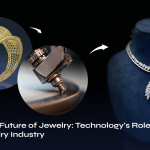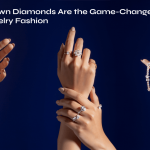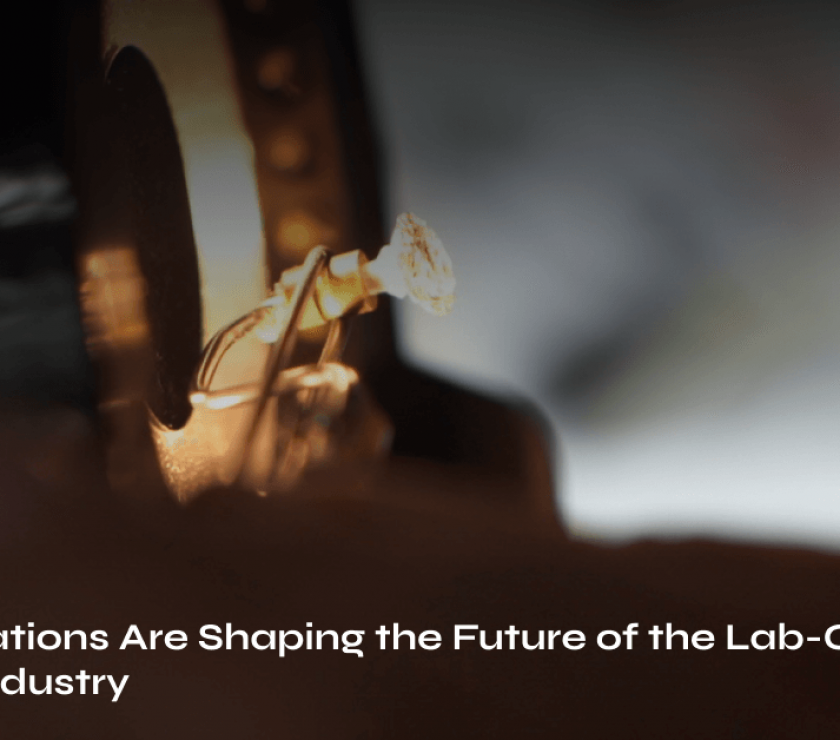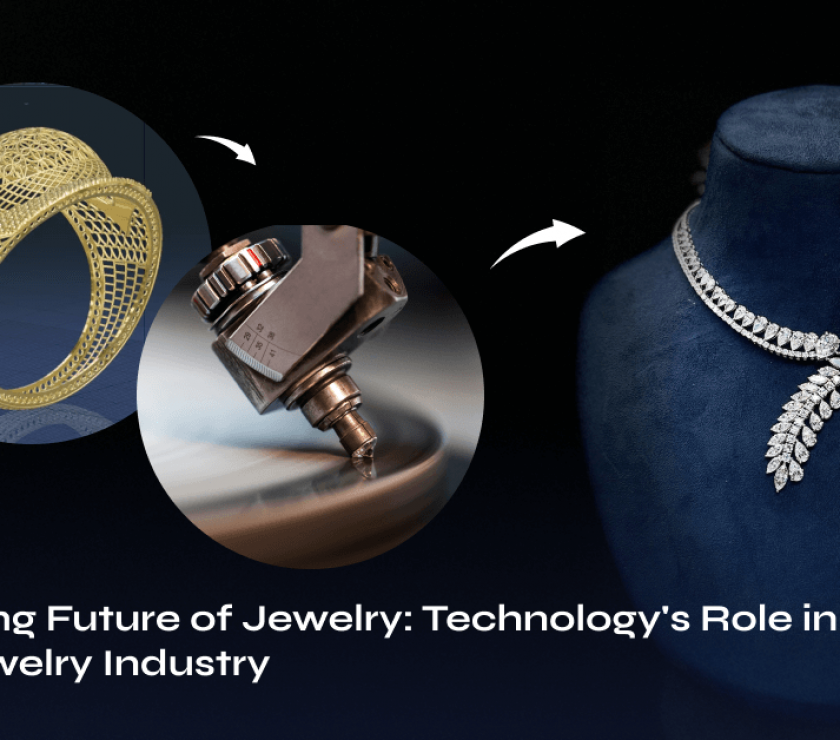Regulating the Future: How New Laws Are Shaping the Lab-Grown Diamond Industry
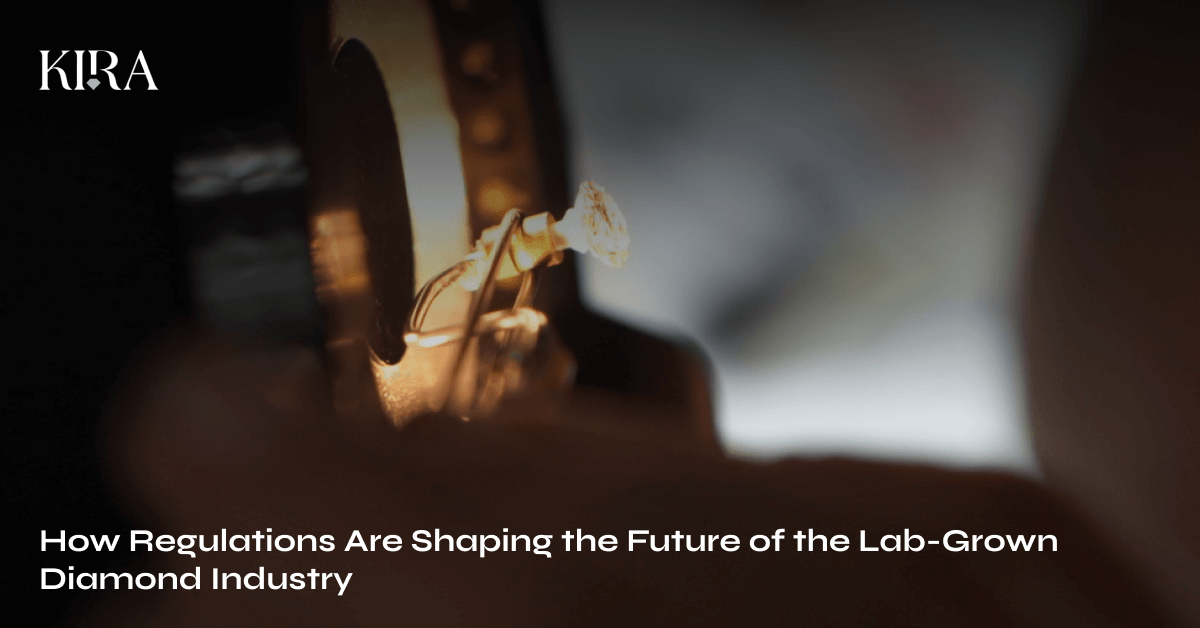
As pioneers in the lab-grown diamond (LGD) industry, we at Kira recognize that our journey is intricately tied to the evolving regulatory landscape. Lab-grown diamonds are no longer niche—they’re transforming the global diamond market, with their share projected to reach 18% by 2030. This growth is not happening in a vacuum; regulations are playing a decisive role in shaping consumer trust, fostering sustainability, and driving innovation.
For instance, in 2022, lab-grown diamonds accounted for nearly $24 billion of the global diamond market. However, as the industry expands, clarity in standards and transparent guidelines becomes critical. Whether it’s the Federal Trade Commission (FTC) in the U.S. defining ethical marketing practices, India’s initiatives to boost LGD manufacturing, or global bodies like the International Grown Diamond Association (IGDA) harmonizing standards across borders, regulations are the bedrock of sustainable growth.
In this blog, we’ll explore how these regulations are influencing key markets, empowering businesses like ours to thrive while ensuring that lab-grown diamonds remain synonymous with transparency and trust.
Understanding Lab-Grown Diamonds
certified lab grown diamonds are created using two advanced methods:
- Chemical Vapor Deposition (CVD): In this method, a diamond seed is placed in a chamber filled with carbon-rich gas. High temperatures break down the gas, allowing carbon to crystallize around the seed.
- High Pressure High Temperature (HPHT): This mimics natural diamond formation by exposing carbon to extreme pressure and temperature conditions.
Certified by organizations like the International Gemological Institute (IGI) and the Gemological Institute of America (GIA), certified lab grown diamonds are nearly indistinguishable from their mined counterparts. They are also gaining popularity as an eco-friendly alternative, offering a smaller carbon footprint and requiring significantly less water.
Regulatory Landscape in the United States
The U.S. has emerged as a pivotal market for lab-grown diamonds, driven by clear regulatory frameworks that promote transparency.
- Federal Trade Commission (FTC) Guidelines:
The FTC updated its Jewelry Guides in 2018, allowing lab-grown diamonds to be labeled simply as “diamonds.” However, manufacturers must disclose their lab-grown origin to prevent consumer deception.n to prevent consumer deception. - Transparency and Disclosure:
Retailers are required to clearly label lab-grown diamonds to ensure informed purchasing decisions. This enhances consumer trust while promoting ethical marketing practices. - Impact on Market Expansion:
Regulations have bolstered consumer confidence, with the U.S. market for LGDs projected to grow at a compound annual growth rate (CAGR) of 9.4% through 2028. Major players like Kira have embraced these guidelines, innovating their marketing and product offerings to align with consumer expectations.
Regulatory Landscape in India
India, the global hub of diamond cutting and polishing, is rapidly gaining prominence in the lab-grown diamond sector.
- Production and Export Growth:
India has established the diamond production promoting body GJEPC. With these developments, 15% of the world’s lab-grown diamonds are currently produced by India, with exports valued at $1.3 billion in 2022. - Key Regulations:
The Indian government has introduced mandatory certification standards to distinguish between natural and lab-grown diamonds. These certifications foster clarity for both domestic and international buyers. - Government Initiatives:
Recognizing the potential of LGDs, India’s Union Budget 2023 included subsidies for research and development in lab-grown diamond production, particularly for CVD methods.
Challenges in Consumer Education
Despite these advancements, a significant challenge remains: educating retailers and consumers about the differences between lab-grown and mined diamonds. We are addressing this through targeted campaigns and partnerships with gemological institutes.

Get Your Kira Mobile Apps Now On The App Store & Google Play!
Global Regulatory Trends
Beyond India and the U.S., the lab-grown diamond industry is witnessing a wave of regulatory developments across other major markets:
- Europe:
The EU has emphasized sustainable practices, introducing eco-labeling standards for lab-grown diamonds to highlight their environmental benefits. - China:
As one of the fastest-growing markets for LGDs, China is developing robust regulations to streamline imports, exports, and quality certifications. - UAE:
Dubai’s Diamond Exchange now includes lab-grown diamonds, reflecting a shift in market dynamics and acceptance.
Cross-Border Collaboration:
Organizations like the International Grown Diamond Association (IGDA) are working to harmonize standards globally. This ensures smoother trade, reduces market fragmentation, and creates a level playing field for producers.
The Role of Regulations in Shaping Market Growth
Regulations are not just a compliance mechanism—they’re a catalyst for industry evolution.
- Boosting Investments:
Clarity in regulations encourages investors to back lab-grown diamond ventures, fostering innovation in production methods like CVD and HPHT. - Promoting Sustainability:
Governments are incentivizing sustainable practices, aligning the industry with global climate goals. - Pricing and Affordability:
Standardized rules reduce production bottlenecks, making LGDs more affordable and accessible.
At Kira, we see regulations as an opportunity to innovate and expand globally. By leveraging clear guidelines, we’re able to enhance our processes, reach new markets, and deliver exceptional products.
Challenges and Opportunities
The journey isn’t without challenges:
- Balancing Innovation and Regulation:
Excessive regulation could stifle innovation in lab-grown diamond production. A balanced approach is essential. - Combating Misinformation:
Clear labeling and certifications help address consumer skepticism and ensure trust.
Opportunities for Growth
Markets with strong regulatory frameworks are ripe for expansion. Companies like Kira can tap into these regions, leveraging their compliance with global standards to build a competitive edge.
Conclusion
The lab-grown diamond industry is at a transformative crossroads, with regulations shaping its trajectory. Transparent policies not only ensure consumer trust but also pave the way for sustainability, innovation, and global trade.
At Kira, we’re proud to be at the forefront of this revolution. By adhering to regulations, educating consumers, and championing sustainability, we’re not just shaping the future of lab-grown diamonds—we’re illuminating the path forward for the entire industry.
As we look ahead, one thing is clear: the sparkle of lab-grown diamonds isn’t just in their brilliance—it’s in the trust and transparency they represent.
|
Why Partner with Kira? ➣ Benefits for retailers: High-quality, ready-made jewellery designs and loose diamonds. ➣ Access to a vast inventory of 250,000 diamonds in various shapes and sizes. ➣ Reliable global delivery and competitive pricing. |






